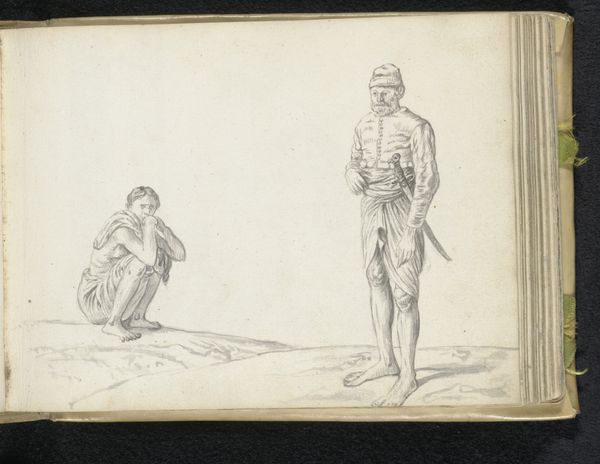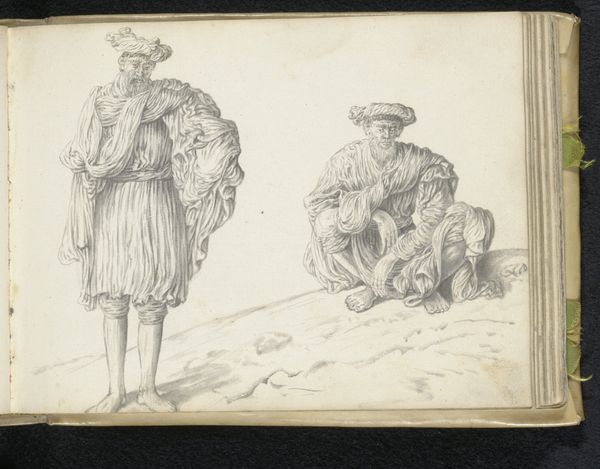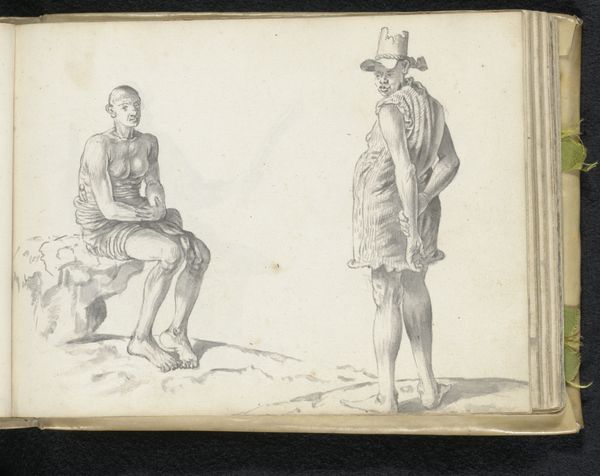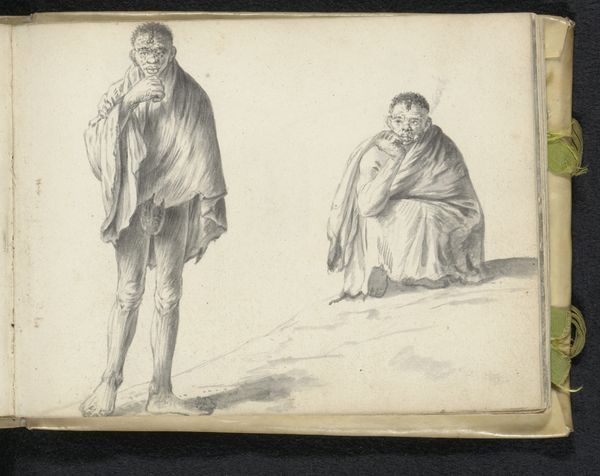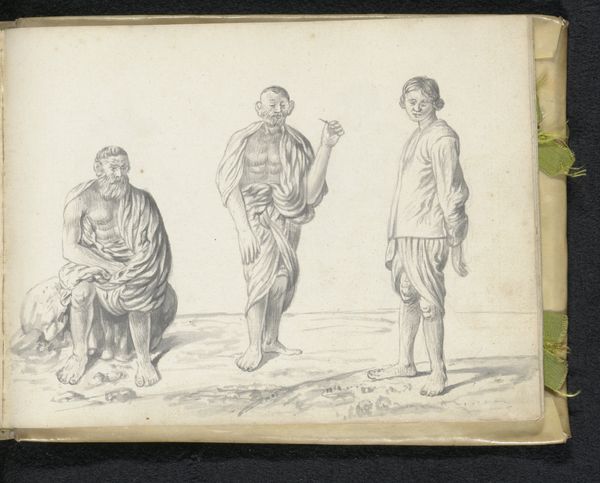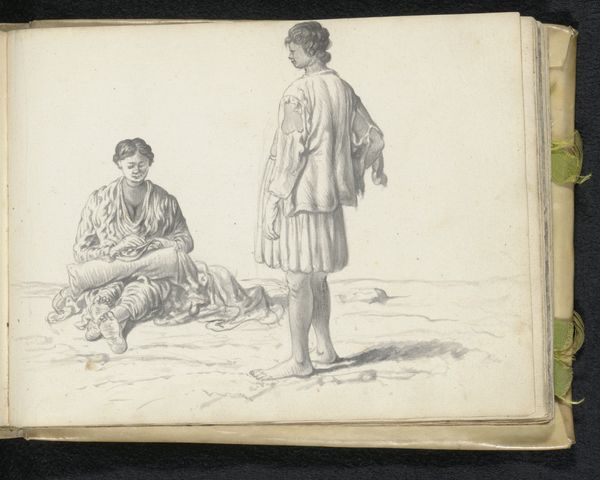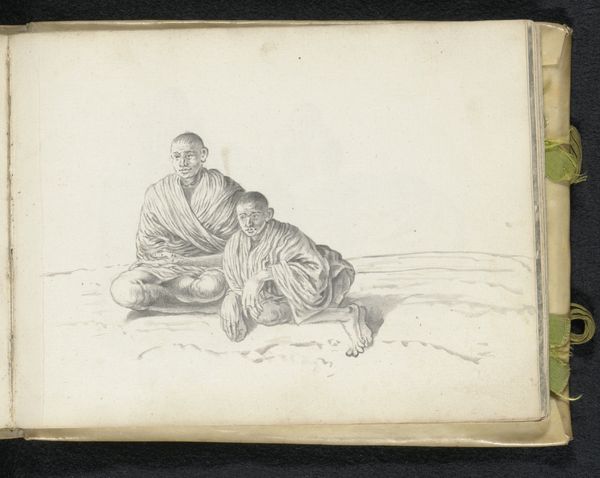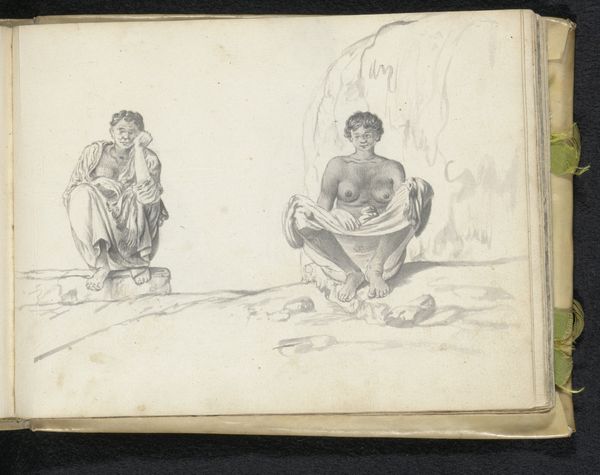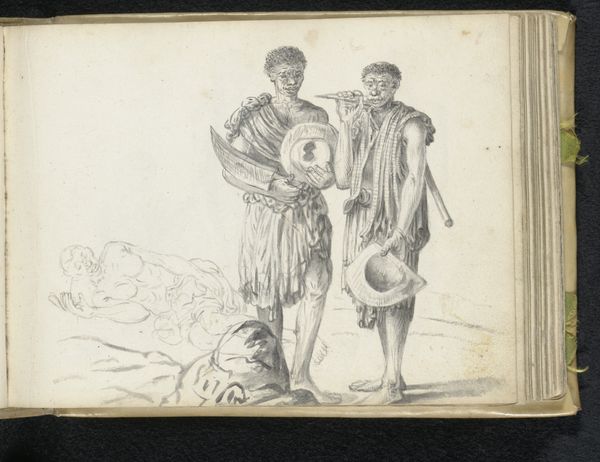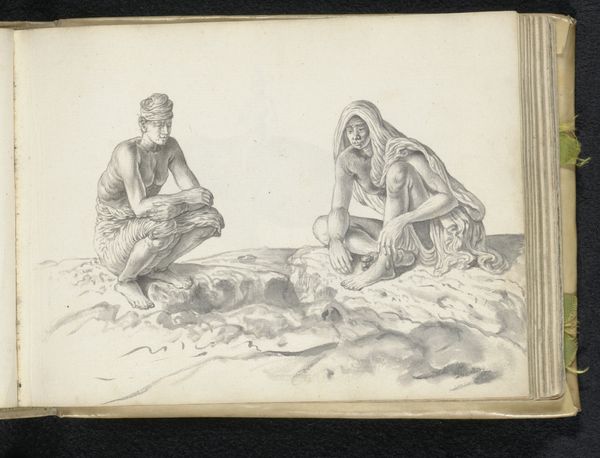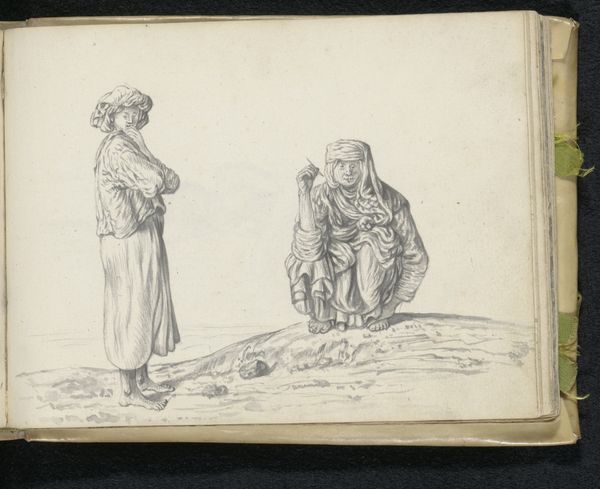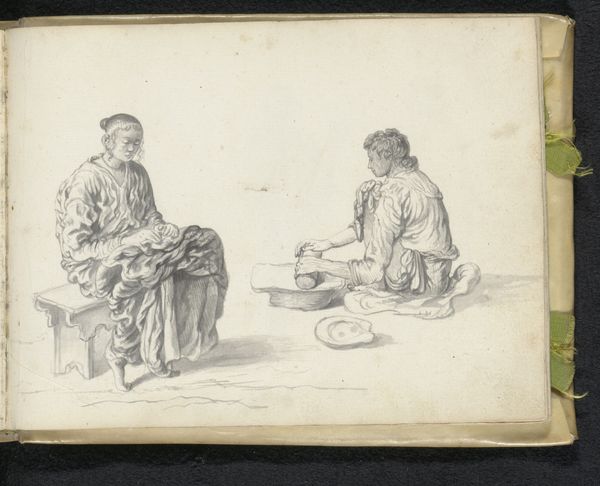
drawing, pencil
#
drawing
#
toned paper
#
light pencil work
#
quirky sketch
#
sketch book
#
personal sketchbook
#
sketchwork
#
pen-ink sketch
#
pencil
#
sketchbook drawing
#
genre-painting
#
storyboard and sketchbook work
#
sketchbook art
#
realism
Dimensions: height 148 mm, width 196 mm
Copyright: Rijks Museum: Open Domain
Curator: This drawing from 1662 by Esaias Boursse, titled "Two labourers outside, one standing and one sitting," offers an intimate glimpse into the lives of working people in that era. It’s rendered delicately in pencil on toned paper. Editor: My initial reaction is one of stark simplicity. The lines are economical, the shading subtle. It feels almost austere, yet there's a clear sense of the subjects' weariness, a certain vulnerability to their pose. Curator: Yes, the composition is strikingly direct. Notice the balanced arrangement of the two figures, their postures creating a visual contrast: the upright stance of one against the seated repose of the other. The tonal variations Boursse achieves with such light pencil work give remarkable depth. Semiotically, what meaning is conveyed via composition and tone? Editor: I find myself focusing on the ‘toned paper’ element. Considering paper as material in seventeenth-century Netherlands brings to mind the labour involved in its production - the rag-collectors, the paper mills, and the socio-economic dimensions reflected. Curator: The medium itself as signifier... Intriguing. But, also think about the realism of the sketch. It feels deeply observant, carefully constructed even within its apparent spontaneity. Editor: While realism is certainly apparent in the figures' portrayal, what truly resonates is how the artist highlights the labour inherent to materials as a comment on these labourers’ conditions: their dependence on their worn textiles, the raw materials of the land beneath their bare feet, the way the physical process of the artwork emphasizes social inequality. Curator: A potent argument, indeed. It is as if Boursse seeks to dignify the everyday reality of his subjects through the formal language of art. Editor: And how can the labor practices implicit in materials transform our viewing of labour represented in Boursse’s artwork, transforming that gaze from merely observation to considering lived, material conditions? Curator: Thank you. Now, after observing these two labourers portrayed within the subtle structure and delicate shading in Esaias Boursse's artwork, it's left to consider... Editor: ...how labour—physical and material—mediates our world.
Comments
No comments
Be the first to comment and join the conversation on the ultimate creative platform.
